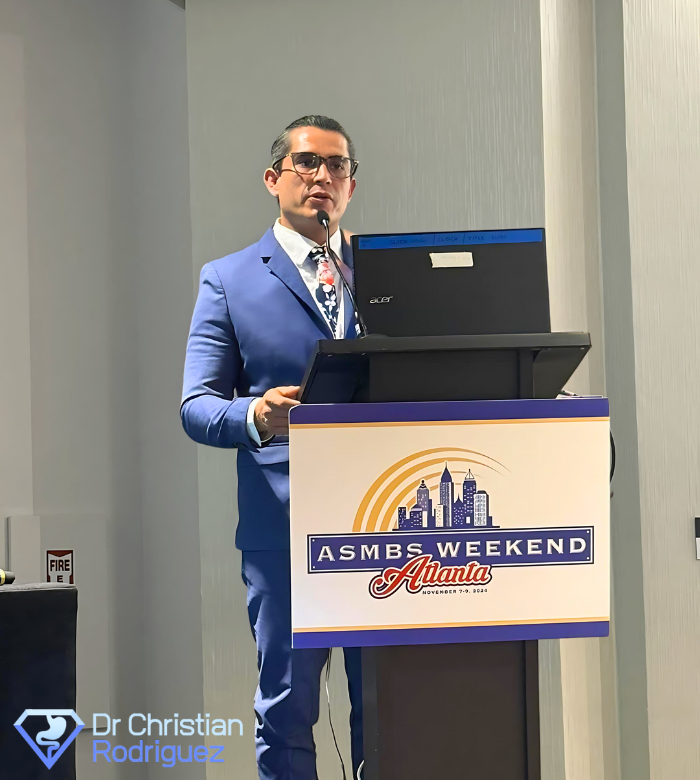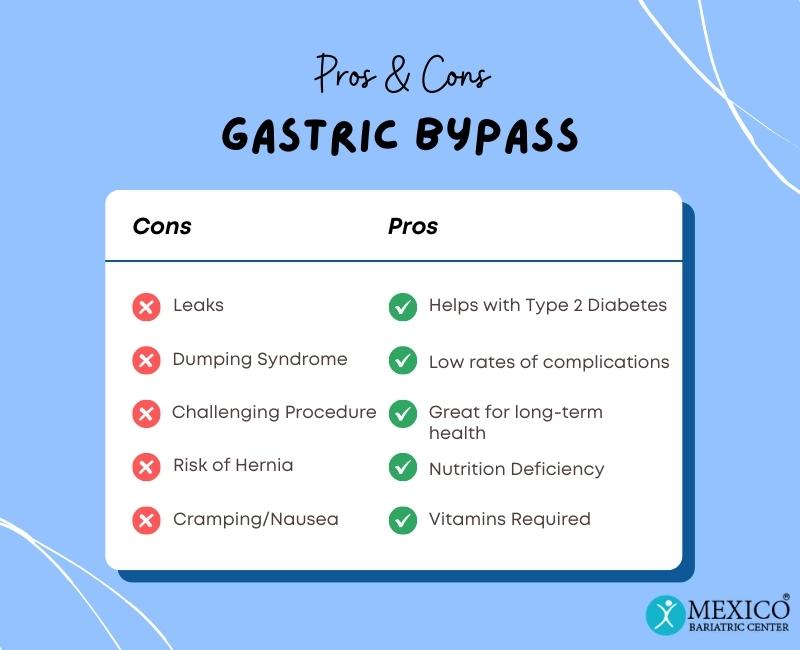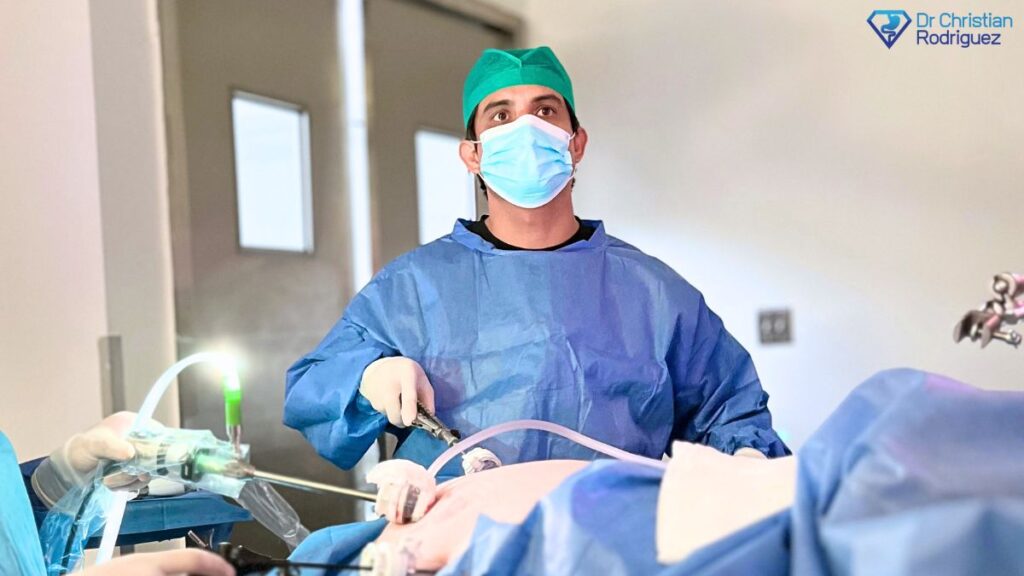Tijuana, Mexico, has become the top destination for RNY gastric bypass surgery worldwide. As the gold standard in weight loss surgery, gastric bypass in Mexico has helped patients from the United States, Canada, and across the globe lose weight without breaking the bank.
Working exclusively with Mexico Bariatric Center®, Dr. Rodigues Lopez is one of Mexico’s leading board-certified bariatric surgeons, offering high-quality gastric bypass procedures at affordable prices. See if you pre-qualify for gastric bypass surgery.

What is a Gastric Bypass?
The Roux-En-Y or (RNY) gastric bypass procedure involves creating a small gastric pouch with surgical staples or a plastic band device. The surgeon then connects the stomach’s smaller pouch directly to the small intestine to bypass the rest of the stomach.
Dr. Christian Rodriguez Lopez performs the gastric bypass procedure laparoscopically for patients with high BMI.

How Gastric Bypass Surgery Works
The bypass procedure helps patients lose weight by reducing food intake and absorption. The new stomach pouch restricts the amount of food the patient can eat, making them feel full faster.
A Roux-En-Y gastrojejunostomy provides a mild malabsorptive component that prevents the full absorption of excess nutrients and calories into the body. Since the amounts of food products that can be consumed are limited, the number of calories going into and being absorbed by the body is decreased.
RNY gastric bypass enhances gastrointestinal hormones like the active GLP-1 and total PYY.

Read more patient success stories
Why Choose RNY Gastric Bypass in Mexico
Starting at $6,295 $5,495
In Mexico, Dr. Christian Rodriguez Lopez and many other medical professionals work with specialized bariatric centers to deliver world-class care that rivals or exceeds the standards found in the US and Canada without lengthy wait times and complicated booking processes.
- Affordable Pricing: Many travel to Tijuana, Mexico, to save almost 70% on bariatric surgery compared to the United States, Canada, and other countries.
- Expert Surgeons: Finding the most skilled bariatric surgeons is crucial to getting the best care in Tijuana, Mexico. Fortunately, many facilities work with surgeons from top medical schools who have performed thousands of gastric bypass procedures.
- Modern Facilities: Many cutting-edge, fully equipped hospitals and surgical centers in Tijuana comply with international standards. Outfitted with top-of-the-line technology and medical devices, these locations provide a secure and comfortable surgical process.
- Short Wait Times: Patients can save months of waiting by choosing bariatric surgery in Mexico. Many facilities can book surgery within a few days based on your health needs and diet requirements.
- Accessible Location: Only minutes from San Diego and the United States border, Tijuana has become a hotspot for Americans interested in surgery without traveling far from home. Based on the facility, it can be more affordable to travel to a center in Tijuana than to other international destinations.
- Multilingual Staff: Clear communication is always essential. That is why many facilities in Tijuana are staffed by medical professionals fluent in English to avoid possible language barriers. Dr. Rodriguez Lopez works with Mexico Bariatric Center, a facility in Tijuana fully equipped with English-speaking staff members.
- Accommodation Options: In Tijuana, bariatric facilities partner with nearby hotels and recovery centers to provide comfortable and convenient lodging for patients before and after surgery.
Cost of RNY Gastric Bypass in Mexico
Undergoing RNY gastric bypass in the United States and Canada can cost as much as $34,000. Patients can save almost 70% on gastric bypass, gastric sleeve, and other weight loss procedures by choosing a bariatric facility in Mexico.
Dr. Rodriguez Lopez with Mexico Bariatric Center offers gastric bypass packages in Tijuana for as low as $5,495.
Do I Qualify for RNY Gastric Bypass?
To qualify for Roux-En-Y gastric bypass surgery, patients must meet specific requirements:
- A patient’s body mass index should generally be 40 or over, or they need to have a disabling or life-threatening condition caused by excessive weight.
- Most physicians prefer to try other types of weight loss/reduction programs first and will use a gastric bypass as an alternative when other methods do not work.
- Patients should be obese for 5 years or more and are between the ages of 18 and 65.
- Patients should also not have medical histories containing incidents of depression, psychiatric disorders, or alcoholism.
Fill out our health questionnaire to get approved for weight loss surgery

Pros and Cons
Like all surgical procedures and weight loss solutions, there are advantages and disadvantages for patients, and not all individuals will be good candidates for all weight loss procedures like Roux-En-Y gastric bypass.
Advantages of Gastric Bypass
Compared with other types of weight loss surgery, Roux-En-Y gastric bypass surgery is excellent for overall weight loss and long-term weight control of patients. It has also been proven to be effective in eliminating co-morbidities, such as Type 2 diabetes.
This surgical procedure also has low rates of complications in both the early and late stages following surgery and very low (less than 1%) mortality rates in patients undergoing the procedure.

Disadvantages of Gastric Bypass
Like any surgical procedure, risks are involved during the actual surgery and afterward during recovery. Surgical risks include those associated with undergoing anesthesia and allergic reactions to medicines. The complications stemming from the surgery itself include leaks, distension of the stomach, hernias, and severe dumping syndrome symptoms.
Most patients that do not experience significant surgical complications often see fast weight loss initially and will continually lose pounds quickly for a period of up to a year. However, diet and exercise need to be considered for successful ongoing weight loss after surgery is completed.
Severe dumping syndrome is a direct result of gastric surgeries. Multiple symptoms may occur that range from mild to severe. They are caused by having the undigested contents of your stomach dumped into your small intestine too quickly, causing nausea and abdominal cramping.
Some patients will experience symptoms right after eating, and some will not have symptoms for several hours after consuming food. In most cases, medical intervention is not necessary for treating dumping syndrome symptoms, but more severe cases may require medication or additional surgery.
Another disadvantage of Roux-En-Y gastric bypass surgery is that the procedure itself is often more challenging than other types of restrictive bypass procedures. However, individual patients’ health and medical history must be considered case-by-case.
Related Resources:

